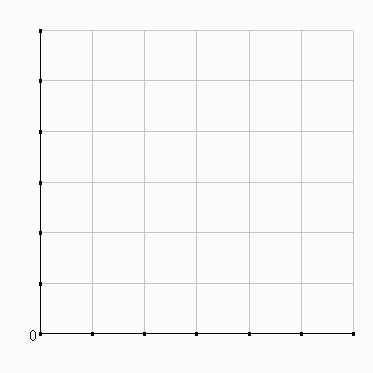| The firm's output expansion paths (OEP) (draw 3 TCo's, then label points before drawing Qo's to show K/L rising)
(1) OEP traces out the cost-minimizing input combinations for all output levels |
 |
||||||||||||
III. Theory of the firm: production and costs
D. Changing output levels and input prices
1. Relating input choices and long-run costs
We have a choice, similar to Uo's and Demand curves:
2 sets of diagrams:
isoquants/isocost line diagrams and unit cost diagrams.
Which to use? They tell us different things:
a firm has 2 steps to making profits:
(1) minimize the costs of whatever Q you produce.
(2) choose the Q which yields the highest level of profits.
Isoquant/isocost diagrams: useful for step 1: to see
choice of input combinations for minimizing costs
Unit cost diagrams: useful to see choice of output levels. Handy to
compare unit costs to output price for output decisions.
But, just like for Uo's and demand, the 2 diagrams are linked together.
| The firm's output expansion paths (OEP) (draw 3 TCo's, then label points before drawing Qo's to show K/L rising)
(1) OEP traces out the cost-minimizing input combinations for all output levels |
 |
||||||||||||
| Note: each point on OEP = a point on LRATC |  |
2. Long-run vs. short-run costs
Important for optimal firm size
We've already seen SR
--recall in particular that DMR results in the eventual upward slope of
MC, AVC and ATC
LR: DMR is not relevant.
So what can we say about shape of long run cost curves?
There exists much variety.
Unit costs: For all output levels...
--LRATC is calculated with the same formula (TC/Q) as SRATC except all inputs are varied
to achieve the lowest possible LRTC.
--LRMC tells us the extra cost of another unit with all costs variable.
These are true minimum values since the firm will adjust all inputs to
satisfy the LCC.
Shapes of LRATC and LRMC depend on scale economies
A firm can never do better in SR than LR. In fact, LRATC = envelope of SRATCs:
 |
||
| As Q rises: | ||
| Range 1: Falling ATC => economies of scale |
Range 2: Minimum ATC => optimal firm size(s) |
Range 3: Rising ATC => diseconomies of scale |
| Division of labor | Replication | Management constraints(?) |
Q* = minimum efficient scale
Note1: Economies of scale do not constrain firms to use same factor intensity recall in general: up q => up k-intensive techniques
Note2: except at point of tangency, LRATC < SRATC
<-- greater flexibility in LR.
Tangency => same slope for LRATC and SRATC
(Economist Viner tried to make LRATC pass through the bottom of each
SRATC--can't do it.)
Note3: Most common empirically--we see ranges 1&2, but not range 3.
Main exception:
Range 1 (falling LRATC) for
entire market output = natural monopoly
Example: public utilities
Resume day 19:
3. Input prices and input combinations
| Consider what happens as relative
input prices change
|
 |
|||||||||||||||||||||||||
? What happens to optimal input combination for producing Qo?
For any output level, input choices depend only on relative factor costs.
Since we stay on Qo, only a substitution effect happens